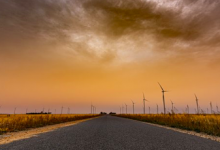Australia needs to introduce a raft of specific targets and supportive policies – and an overarching “master plan” if it is keep pace with the federal government’s renewable energy ambitions, and if it is to keep pace with the rest of the world on the switch to green energy.
The Clean Energy Council has released its 55-page “Power Playbook” to get Australia’s stalling renewable energy transition back on track, and lay a path to reach a zero emissions – or 100 per cent renewable grid – by 2035 to ensure Australia’s climate targets can be met.
The Power Playbook includes a call for a Clean Energy Transformation Investment Package of around $10 billion over the next decade to boost Australia’s Australia’s international competitiveness.
It also calls for a “Renewable Energy Superpower Masterplan”, including extending the large scale renewable energy target from 2030 to 2040, including new national targets for rooftop solar and distributed energy storage, a national offshore wind target and support for home batteries and green hydrogen and green minerals.
It suggests that this “masterplan” could be best managed by the newly created Net Zero Authority.
The CEC says Australia is in a global race for capital and supply chains, and if it it serious about meeting its own target of 82 per cent renewables by 2030, and to become a renewable energy superpower, it needs to match the policies of competing nations.
“We need to make our own luck,” says Anna Freeman, the CEC’s policy director for de-carbonisation.
“Capital is on the march. We need to signal as quickly as possible that Australia intends to be a leader in clean energy and green commodities markets. If we don’t, we’ll find ourselves at the back of the queue for capital, technology and skilled workers.”
Those thoughts were echoed by the CEO of the Australian Energy Market Operator Daniel Westerman on Monday.
“Australia is of course among many nations around the world that are navigating this energy transition, so we are competing not only for material and labour in Australia, but in global markets and through global supply chains,” he said in a speech to a conference on Monday.
Freeman says it is clear that low-cost renewable energy is the foundation of a competitive Australia fit for the race to net zero, but without a master plan, and supportive policies and firm targets, investment won’t happen at the pace required.
Australia is already falling well behind its 2030 renewables target with delays in connections, transmission and other problems slowing the rollout of new large scale wind and solar projects to a crawl. Only the big battery and domestic rooftop solar sectors remain strong.
The CEC says the current incremental approach is inadequate.
Freeman says Australia needs to see a substantial increase in annual financial commitments in the order of 6 to 7 GW of new large-scale renewable projects from 2024, and about 3.5 GW of rooftop solar per year through to 2030, to reached the targeted 82 per cent renewables by 2030.
“We will then need to keep powering ahead in renewable energy deployment if we are to realise our ambition to be a renewable energy superpower.”
CEC chief executive Kane Thornton says Australia may not have the firepower to match the US in throwing resources at the green hydrogen and critical minerals sector, but its first priority in any case must be to create access to low cost renewables.
“In a blizzard of ideas, our renewable energy future needs a single cohesive strategy for us to progress as a nation, our playbook helps Australia chart that course,” Thornton said.
“The decisions we make now will impact future generations, we can’t leave our energy future to chance.
“Australia has a transformative opportunity before it to leverage its tremendous renewable energy advantage for unprecedented economic expansion and green growth.
“But it cannot rely on its natural advantages alone to capture this opportunity. In the context of a global race to net zero emissions, we will need to act decisively to create our own luck. It will require levels of planning, co-ordination and investment the likes of which we have seen only in times of war or crisis.
“This defining moment in time – the climate crisis – deserves no lesser focus.”










